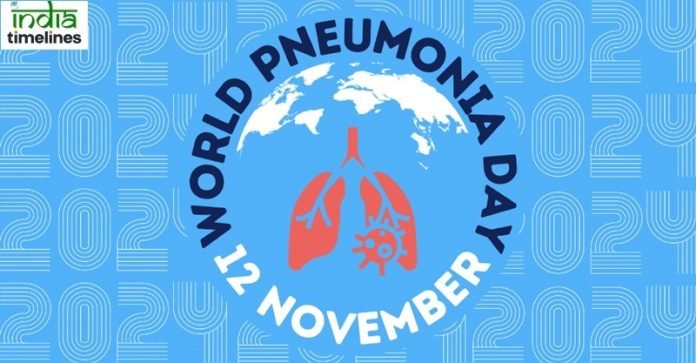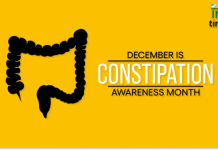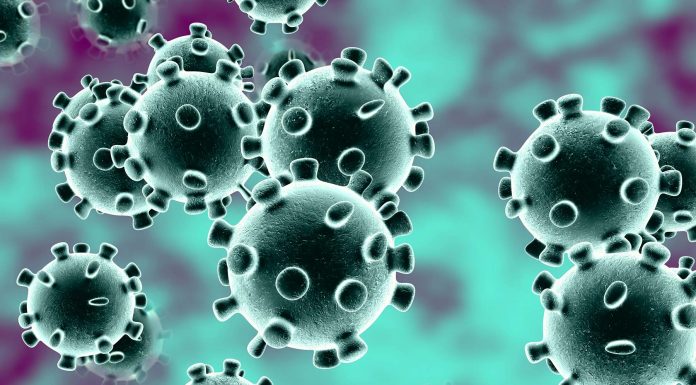
World Pneumonia Day, observed every year on November 12, is a crucial occasion to raise awareness about pneumonia, a life-threatening infection that affects millions of people worldwide, especially children and the elderly. Pneumonia, an acute respiratory infection that inflames the air sacs in one or both lungs, can range from mild to severe and is caused by various infectious agents, including bacteria, viruses, and fungi. Despite being preventable and treatable, pneumonia remains a major cause of morbidity and mortality, particularly in low- and middle-income countries.
The Significance of World Pneumonia Day
World Pneumonia Day was first established in 2009 by the Global Coalition Against Child Pneumonia, a network of health organizations and advocacy groups. The day serves as a platform to highlight the urgent need for global action to combat pneumonia, promote prevention and treatment strategies, and reduce the burden of this disease, especially among vulnerable populations such as children under five, older adults, and individuals with compromised immune systems.
The theme for World Pneumonia Day varies each year, focusing on different aspects of pneumonia control, including vaccination, antibiotic resistance, air quality, and access to healthcare. The day is an opportunity to educate the public, mobilize resources, and encourage governments and healthcare providers to prioritize pneumonia prevention and treatment in national health policies.
Pneumonia: A Leading Cause of Death
Pneumonia is one of the leading causes of death among children under the age of five worldwide. According to the World Health Organization (WHO), pneumonia kills more children than any other infectious disease, including malaria, diarrhea, and HIV/AIDS. In 2019 alone, pneumonia claimed the lives of more than 740,000 children, accounting for 15% of all deaths in children under five years of age.
The disease disproportionately affects children in low- and middle-income countries, where access to healthcare, vaccines, and proper nutrition may be limited. Sub-Saharan Africa and South Asia are particularly hard-hit regions, with high pneumonia-related mortality rates due to factors such as malnutrition, indoor air pollution, and lack of access to essential healthcare services.
Pneumonia also poses a significant threat to older adults, particularly those with underlying health conditions such as chronic obstructive pulmonary disease (COPD), heart disease, and diabetes. The elderly are more susceptible to severe pneumonia, and the risk of death from pneumonia increases with age. In addition to children and the elderly, individuals with weakened immune systems, such as those living with HIV/AIDS or undergoing cancer treatment, are at heightened risk of developing severe pneumonia.
Causes and Risk Factors
Pneumonia can be caused by a wide range of microorganisms, including bacteria, viruses, and fungi. The most common bacterial cause of pneumonia is Streptococcus pneumoniae, while viral pneumonia is often associated with influenza and respiratory syncytial virus (RSV). In certain regions, Mycoplasma pneumoniae and Chlamydia pneumoniae are common causes of atypical pneumonia, which tends to have a milder presentation than typical bacterial pneumonia.
Several risk factors increase an individual’s likelihood of developing pneumonia, including:
- Age: Young children and older adults are more vulnerable to pneumonia due to their weaker immune systems.
- Chronic diseases: Conditions such as asthma, COPD, heart disease, and diabetes weaken the body’s ability to fight infections.
- Malnutrition: Poor nutrition weakens the immune system, making it harder to fend off infections.
- Air pollution: Exposure to indoor and outdoor air pollutants, including tobacco smoke, increases the risk of respiratory infections.
- Immunosuppression: People with weakened immune systems, such as those with HIV/AIDS or undergoing chemotherapy, are at higher risk.
- Lack of vaccination: Failure to vaccinate against pneumonia-causing pathogens, such as pneumococcal bacteria and the flu, significantly increases the risk of infection.
Symptoms of Pneumonia
Pneumonia symptoms can range from mild to severe, depending on the cause of the infection, the patient’s age, and overall health. Common symptoms include:
- Cough: Often productive, meaning that it brings up mucus (sputum), which can be yellow, green, or even blood-streaked.
- Fever: A high temperature that may be accompanied by sweating and chills.
- Shortness of breath: Difficulty breathing or rapid, shallow breathing.
- Chest pain: A sharp or stabbing pain that worsens when coughing or breathing deeply.
- Fatigue: Feeling tired or weak, sometimes to the point of exhaustion.
- Nausea or vomiting: Particularly in young children, pneumonia may cause nausea, vomiting, or diarrhea.
In severe cases, pneumonia can lead to complications such as respiratory failure, sepsis (a life-threatening infection in the bloodstream), and pleural effusion (a buildup of fluid in the lungs). Without timely treatment, these complications can be fatal, especially in vulnerable populations.
Prevention Strategies
The good news is that pneumonia is largely preventable. Several key strategies can help reduce the incidence of pneumonia, particularly among high-risk groups:
- Vaccination: Vaccines are one of the most effective ways to prevent pneumonia. The pneumococcal vaccine protects against the most common bacterial cause of pneumonia, while the influenza vaccine reduces the risk of viral pneumonia caused by the flu. Children under five, older adults, and people with chronic health conditions are strongly encouraged to receive these vaccines.
- Good nutrition: Ensuring that children, particularly those in developing countries, receive adequate nutrition helps strengthen their immune systems and reduces the risk of infection.
- Reducing air pollution: Efforts to reduce indoor air pollution, such as using clean cookstoves, and minimizing exposure to outdoor air pollutants, including tobacco smoke, are important in lowering the risk of respiratory infections.
- Handwashing and hygiene: Regular handwashing with soap and water, particularly before eating and after using the restroom, helps prevent the spread of pneumonia-causing germs.
- Exclusive breastfeeding: For infants, exclusive breastfeeding for the first six months of life boosts immunity and lowers the risk of pneumonia.
- Access to healthcare: Early diagnosis and treatment are critical for preventing severe pneumonia. Ensuring that families in remote or underserved areas have access to healthcare facilities and trained healthcare workers is essential for reducing pneumonia mortality.
Treatment of Pneumonia
When pneumonia occurs, timely and appropriate treatment can save lives. Bacterial pneumonia is typically treated with antibiotics, while antiviral medications may be used to manage viral pneumonia in severe cases. Supportive care, such as oxygen therapy and hydration, is crucial for patients with severe pneumonia.
In resource-poor settings, access to life-saving treatment can be a challenge. Many children die from pneumonia because they do not receive the necessary antibiotics or supportive care. On World Pneumonia Day, organizations such as UNICEF, the WHO, and Gavi, the Vaccine Alliance, emphasize the importance of scaling up access to affordable and effective treatments in these regions.
The Role of Global Action
World Pneumonia Day underscores the importance of a coordinated global response to pneumonia. Advocacy efforts focus on raising awareness, securing funding for pneumonia prevention and treatment programs, and promoting the development of new vaccines and treatments. Governments, non-governmental organizations (NGOs), healthcare providers, and civil society all have a role to play in ensuring that no child or adult dies from a preventable disease like pneumonia.
Conclusion
World Pneumonia Day is a reminder of the devastating impact of pneumonia on global health and the urgent need for continued action to prevent and treat this disease. By raising awareness, promoting vaccination, improving access to healthcare, and addressing underlying risk factors, we can save lives and reduce the burden of pneumonia worldwide. Every year, World Pneumonia Day shines a light on the lives lost to this preventable disease, and through collective effort, we can move closer to a world where pneumonia is no longer a major threat.



































